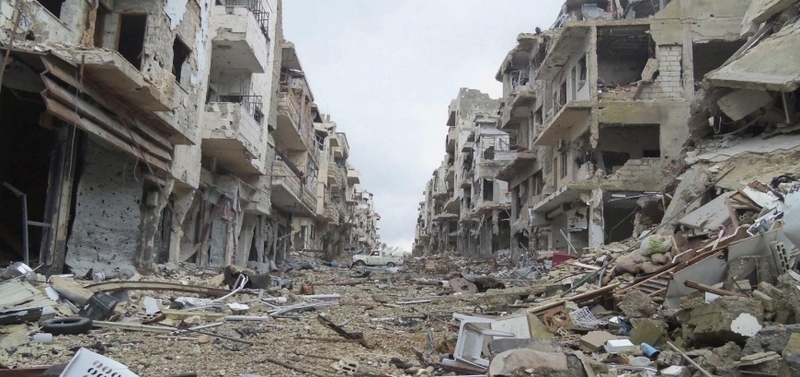While fighting continues in various regions throughout Syria and devastation and destruction continues to expand, the regime prepares its "ambulatory" reconstruction plan, including compensation for private property and the reformation of public sector facilities. The government has allocated 50 billion Syrian pounds (approx. 200 million USD) for 2015 – a minor sum when considering the magnitude of losses during the war, which is estimated to have exceeded 200 billion USD.
Poverty and Alienation
The deterioration of the Syrian pound (recently dropping to 270 SYP per USD), a significant decline in the Central Bank's reserves, the escape of Syrian businessmen and investors with a wealth of foreign currency (estimated at more than 36 billion USD) have all contributed to the economy’s recent inflation, doubling the prices of basic goods and services. The purchasing value of salaries and wages have declined resulting in the loss of jobs and high unemployment rates (57.7 percent by the end of 2014). About three million Syrians, who provide for around 13 million people, have lost their jobs.
Nearly four out of every five people in Syria are considered "poor", and more than 70 percent of Syrians live in extreme poverty, unable to secure their minimum basic and non-basic needs. More than 30 percent of the population survives in a state of extreme poverty. Syrian men, unable to participate effectively in society or determine their real priorities and aspirations under the political, economic and social system, have become strangers to the objectives, policies and relationships that are formed in the light of existing institutions and forces of power.
Reconstruction
The Secretary of the Reconstruction Committee in the Ministry of Local Administration assured government media agencies that the Committee "began its work last year, estimating the damage caused since the beginning of the crisis. We have transferred all the compensation to the affected people, specifically, to the sub-committees in each province".
"The Reconstruction Committee carries out the immediate rehabilitation of all basic facilities in areas that have been liberated by the Syrian Arab Army, so as to ensure the return of people and the complete implementation of the project plans of 2014, and start the implementing of the reconstruction plan of 2015", the Secretary added.
While merchants and industrialists are suffering from the loss of foreign currency, the Central Bank is unable to cover the importers' needs for foreign currency.
The merchants, craftsmen and businessmen who are still working in Syria requested officials to consider various ways to restore over 36 billion USD which fled the country in the last few years to finance the reconstruction plan in the public and private sectors. Much of this money instead went towards investments or deposits in a number of Arab countries – notably Lebanon, Jordan, Dubai and Egypt.
A report prepared by the Syrian Center for Policy Research in collaboration with the United Nations Development Program and United Nations Relief and Works Agency (UNRWA) has recently concluded pessimistic economic and social results, which is understandable if we consider the nature of war in the past few years with the alienation of Syrian citizens in their economic, security and social distress.
The report shows the war’s effects until the end of 2014; gross domestic product decreased this year by 9.9 percent, investment declined, the balance between exports and imports recorded a sharp deterioration from 82.7 percent in 2010 to 29.6 percent in 2014, reflecting an enormous trade deficit which reached 42.7 percent.


